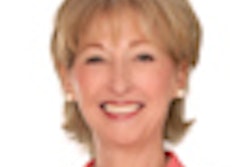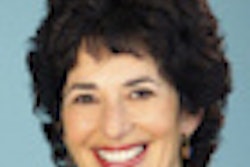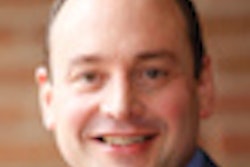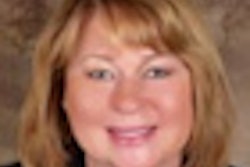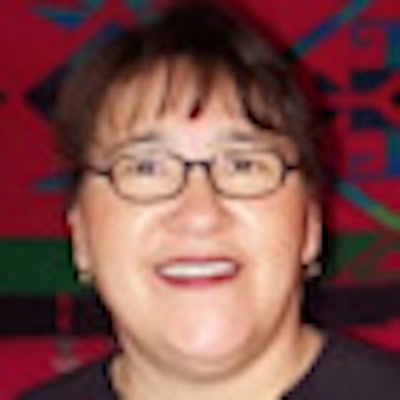
DrBicuspid.com is pleased to present the next installment of Leaders in Dentistry, a series of interviews with researchers, practitioners, and opinion leaders who are influencing the practice of dentistry.
Maxine Brings Him Back-Janis, RDH, MPH, is on the faculty of the dental hygiene department of Northern Arizona University and is in a doctoral program in higher education. Before becoming a registered dental hygienist, she spent 24 years as a dental assistant with the Indian Health Service.
Last year, Janis returned to the Pine Ridge Indian Reservation in South Dakota, where she grew up, to participate in an oral health assessment study funded by the W.K. Kellogg Foundation. Her experiences there compelled her to begin looking for new ways to improve access to oral health services for the Lakota people who live on the reservation, starting with an essay in the October issue of Health Affairs (Vol. 30:10, pp. 2013-2016) that calls for new workforce models and education initiatives.
We spoke with Janis about the issues many Native Americans face with regard to access to healthcare, and discussed the numerous challenges she has overcome in her journey to become a healthcare professional and educator.
DrBicuspid: What prompted you to write the Health Affairs essay?
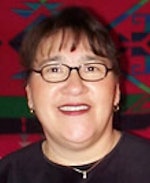 Maxine Brings Him Back-Janis, RDH, MPH
Maxine Brings Him Back-Janis, RDH, MPH
Maxine Brings Him Back-Janis: On the second or third day of our trip to Pine Ridge, we went to one of the sites where we were planning to do a screening and I saw some children there. I asked them, "Where's your mom?" and one of the little ones said, "She's not here." I told them we couldn't do a screening on them without their parents being there. So throughout the day we did the screenings, and those children were sitting outside the whole time. It was hot and they were sitting on clothing that a mission group had brought to this community building. I gave them some water and expected somebody to come and get them at some point, but no one ever did.
Toward the end of the day, I was sure they were hungry, and I had some trail mix that I gave to them. And that started my heart going to a different place because I have been there before. I lost my mother when I was very young and was raised by my extended family, and back then, during the '50s, families did what they could to keep us fed, but often basic food needs were in short supply.
So we got done that day, and those children were still sitting out there. And when I left, when I was driving away, something hit me and I stopped and wept, literally wept. I couldn't stop crying. And I thought, "What can I do to change this picture?" I called Terry, Dr. Batliner, and said, "Why are we seeing this?" And he said, "Maxine, you need to write this story."
And that's how the essay came to be. It was just heart-wrenching to see those three children. Because these are the faces of children on the reservation who cannot access care. And the literal word for children in our language, "wakanyeja," means "sacred children."
But to finish the story: On the last day we were at Pine Ridge, we went to a tribal gathering and set up a booth to do more screenings, and as I was walking around asking people if they wanted an oral health screening, one of the children I'd seen that day was there with her mother, and she saw me and ran up to me and said, "My mom's here, my mom's here!" and we were able to do her screening.
Will you be involved in additional research related to this study?
Yes, I will remain involved in research. That assessment was just to get this snapshot. But as a result of our work, I've come to the conclusion that we really do need midlevel providers in these communities or we will continue to see what we saw in that study. And perhaps we can grow our own tribal community members to consider these options.
What led you to become a dental assistant?
Back in the 1950s and 1960s, our options on the reservation were real limited as far as education beyond college. In those days, the role models were very limited for us -- even just knowing how to get into college, let alone how to pay for it. As tribal members, when we graduated from high school, we could go to relocation programs. At the time, the government was trying to assimilate us into mainstream society. We could go to San Francisco, Los Angeles, Chicago, Cleveland, and other cities to learn some sort of trade.
“We really do need midlevel providers in these communities.”
— Maxine Brings Him Back-Janis,
RDH, MPH
So when I graduated, I opted to go to Los Angeles, and the Bureau of Indian Affairs bought my bus ticket. When I got to LA, I and many others from reservations all over the country were picked up by someone from the bureau and taken to their main office. When we arrived at the office, they asked us what we wanted to do, and we said, "What are our choices?" They listed many of the vocational trades, including nursing assistant, secretary, and dental assistant. And I thought, "I don't want to work the night shift" -- so I decided to be a dental assistant. There were several others from different reservations who decided to become dental assistants. We lived together in this huge city and went through this dental assistant program. My first job was in Santa Monica, where I worked in a dental practice.
By then there was a piece of me that felt like my ties were too strong. I wanted to go home. When I was still going through the program, my grandmother, who had never written a letter, wrote me saying, "It is harsh on the reservation, try to make it in the world"--- but I didn't listen ... (assimilation was not going to work for me). Instead I went home and applied for a job with the Indian Health Service. I also realized I really wanted to go to dental hygiene school, so I applied at the University of South Dakota and got accepted. I also got the job with Indian Health Service. I opted to stay home on my reservation and accepted the job with Indian Health.
But then I got married and stayed on the reservation and didn't go to school. I went to work with the Indian Health Service and moved my family to different tribal communities across the U.S. I lived on many reservations while working for the health service, in Oklahoma, Montana, South Dakota, and Washington. So I've had the exposure to many tribal communities, which enables me to be a voice and an advocate for what tribal needs are with respect to oral health.
How did this lead to you becoming involved in public health dentistry?
When I was at the Yakima Tribal Health Center (Washington), while still working for the Indian Health Service, I worked with one dentist who was very supportive of my career aspirations. Every year we had to (as part of our evaluation) discuss our long-term goals, and every year I would identify that I wanted to go back to school and become a dental hygienist, but I never verbally voiced that I had an ultimate goal and that was to someday become a dentist or doctor.
And that doctor -- I have so much respect for him even today, he helped me launch my professional journey. So I applied for dental hygiene school and was accepted. The Portland Area Indian Health Service supported my education while I worked. My obligation when I completed the program was to go back and work in tribal communities. I didn't consider this an obligation, but rather sense of commitment to my community of American Indian people.
I graduated in 1995 with an associate's degree and was asked to teach at a tribal college in Montana, I taught dental assisting. My education pathway was not yet complete; I wanted to have a bachelor's degree, so I moved back to Washington and applied for a degree completion program at Eastern Washington University. While I was pursuing a bachelor's degree, I made the decision that public health was my calling, so I worked in a public health dental practice while also attending classes.
But then life changed again: I was diagnosed with breast cancer, which limited what I could do as a dental hygiene practitioner. I resigned from the practice, went through surgery and treatment, and when I was finished (August 2002) I thought, "OK, what now?"
I had some friends who worked for the Northwest Portland Area Indian Health Board, they suggested I apply for a research fellowship, which would allow me to work on my master's degree. Research wasn't my area of interest, but I figured why not? I submitted my application and was called for an interview. Shortly after the phone interview, I received another call informing me that I'd been accepted as a fellow. I started my master's program and graduated from Portland State University with a master's in public health.
About the same time (2004), I received an invitation to apply for director of the Hopi Project (a clinical rotation education experience on the Hopi tribal reservation) at Northern Arizona University, and I applied and was hired. This allowed me to finally begin work on my doctorate.
There have been so many people who have helped me along the way that I want to give back and create those same opportunity for others.
Given your experience with Indian Health Service, is the situation at Pine Ridge unique or similar to conditions on other reservations?
I think there are vast differences in tribal communities, but when you look just at oral health, there are many similarities. We need to start the education process earlier. There are so many health literacy and socioeconomic issues that come into play. Which is why I support midlevel providers -- these providers need to be in the schools, in the homes -- that's where we need to start. For example, we need to begin with the expectant mom at the onset of her pregnancy, and then continue oral health education and intervention strategies throughout her pregnancy and beyond. I strongly believe the role of the midlevel dental provider in our tribal communities can make great in-roads in the challenges we face toady around oral health disparities.




